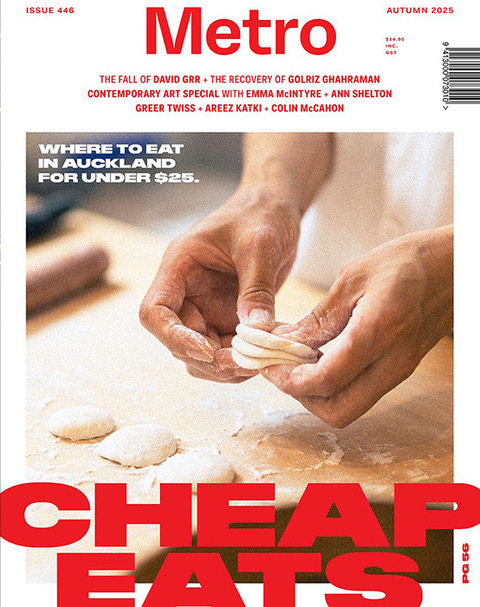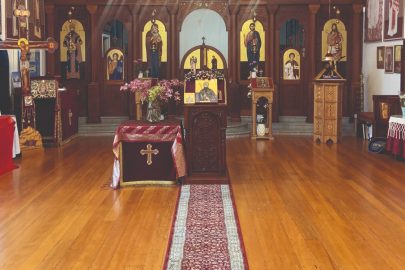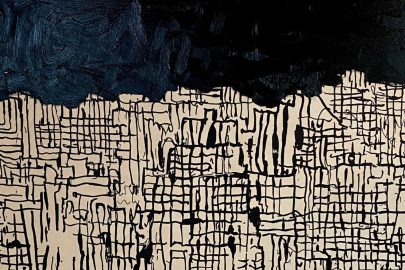Feb 21, 2014 Urban design
Inside the state house “war zone”.
When architect John Haydn began his epic Auckland photography project, he was searching for visible signs of the forces that shape the city. Or, as he puts it: “How can so few people fuck up so much beautiful land?” Haydn amassed a vast collection of photos, which he categorised in various ways. He remained none the wiser.
In August 2012, he caught a break — an article about architect friend Fleur Palmer being pilloried for trucking state houses from Glen Innes for homeless families in Kaitaia. Despite Palmer’s good intentions on behalf of He Korowai Trust, the ousted state house tenants and those seeing their neighbourhood decimated were not impressed. “What she is doing is morally repugnant. It’s taking from the poor to give to the poor,” said one protester.
Haydn was shocked by what he saw in GI: “It was site after site of desolation.” It reminded him of a visit to Bosnia just before the Kosovo war: “These mini war zones — that’s what it felt like.”
Treading the line between artist and activist, Haydn videoed house removals and their accompanying protests and began engaging with the Tamaki Housing Group. He photographed each address before and after the house had been removed, until the damage was cleaned up and grassed over. “It’s a violent thing and the people are being completely disregarded while it’s happening. It’s the disrespect which is astonishing.”
He captured something of the violence in a composite of four videos of removals — two of houses sliding off their foundations, one shot from inside a house as it’s moving and one, particularly haunting, shot from a car following a house on the road at night as it makes its way north. The accompanying sound tracks include the trucks’ brakes straining with their load in a wail of pain.
http://vimeo.com/86475214
Another who noticed the article was film producer Richard Riddiford. He contacted award-winning director Briar March, suggesting there might be a bigger story. March, best known for There Once Was an Island, a poignant portrayal of the effects of climate change on the community of Takuu, an atoll 250km north-east of Bougainville, began making Whare Tapa Wha. It would be the story of one failed utopian vision being dismantled to start another — with the state houses trucked north neatly providing the mirror of the two projects.
For various reasons, the Kaitaia project stalled. “I realised it wasn’t so black and white,” says March, who is now aiming for a film that brings together different perspectives, including developers such as Creating Communities, Housing NZ’s preferred partner in the Glen Innes redevelopment.
She wants Whare Tapa Wha, which will be shown on Maori TV this year, to examine the change in state housing policy and its long-term social and psychological ramifications. “I’m interested in where housing is going in New Zealand, the move into this era of what’s called ‘social housing’ and that the government wants to step away from some of its responsibility as the provider of state housing.”
The film follows families moving out of state houses that had been their homes for generations, going back to the 1950s. “This house is part of us. This house is our place,” says Mateora Kanuta in the film as she leaves her home with her two daughters.
Another artist caught up in events in Glen Innes is AUT visual arts senior lecturer Dieneke Jansen. She had been photographing state houses at Hobsonville and Glen Innes, including those at Talbot Park, redeveloped in 2007. Returning from a residency in Rotterdam in 2012, Jansen found all hell had broken loose in GI. “I felt like I needed to do something here. Instead of photographing, the first thing I did was I set up a tent and camped.”
She, too, met the activists and began developing ideas to draw attention to the new landscape of empty lots. When some of the activists made a guerrilla garden at 16 Taniwha St, she made a scarecrow. “Mickey” — Michael Joseph Savage — sat on a folding chair in suit and tie and gumboots. “He’s watching what’s going on,” says Jansen. The architect of the welfare state would probably be turning in his grave.
Other temporary interventions in vacated sections included cardboard cut-outs of state housing shapes arranged as For Sale signs, a line of washing from one fence to another and a trampoline on a site in Melling St. There was a picnic table and chairs and the plan of a state house marked out with vertical rods topped with bird-seed balls. “I see the space as a staging of activity showing possibility,” says Jansen.
What does it all mean? Exploring the theme of home in art is nothing new. Examples: Last year’s 5th Auckland Triennial’s “If you were to live here…”; John Radford’s Graft, a community of miniature villas floating in space, inspired by the motorway demolitions in the early 60s in Newton and Grafton; Michael Parekowhai’s controversial commission for a “reduced-scale state house, with a chandelier within” destined for Queens Wharf, reportedly at a cost of $2 million.
The interest in the gutting of GI is in the nexus of class, race, power, ideology and greed it represents. It’s tempting to summarise it as a land grab — a state-sanctioned gentrification so the wealthy eastern suburbs can colonise the now-valuable land in Glen Innes and enjoy waterside views of the Tamaki Estuary, and a latte at the Apirana Ave Nosh. “There seems to be something unfair about only the rich being able to live next to the water,” says March.
The redevelopment is packaged as a solution to Auckland’s housing crisis, part of the suburb tagged as a Special Housing Area, which brings forward the higher-density zoning of the Unitary Plan and fast-tracks resource consents. In the process, long-term state house tenants, including returned servicemen from the 1950s with tenancy agreements that promised a house for life, are being dispossessed.
“We don’t have a good or traditional protection for tenancy in New Zealand,” says Jansen. Says Haydn: “The state house is a symbol of the welfare state and to see them being destroyed in this way gives you this sharp sense that it’s being done with no understanding of what’s being lost.’’
A lost opportunity for partnership with the community in what might have been a creative, inclusive process of urban renewal. Where ownership is everything, the state house is now a symbol of dependency to be discouraged. The paradox of this ideology is that our Prime Minister, a self-made man, grew up in one.
In the following pages, photos by John Haydn, Briar March and Dieneke Jansen show the Glen Innes house removals and their aftermath.
Latest


Metro N°446 is Out Now
In the Autumn 2025 issue of Metro: Cheap Eats is back with the top 50 places to eat in Auckland for under $25. Delight your eyes with a bumper Contemporary Art Special including Emma McIntyre, Ann Shelton, Greer Twiss, Areez Katki, Bob Harvey's memories of The McCahon House parties and a scooter-load of reviews from Sam Te Kani. PLUS: The fall of David Grr, the recovery of Golriz Ghahraman, Anna Rankin spends an afternoon at St Lukes Foodcourt, Metro meets Awful Food Reviews and more!
Buy the latest issue


